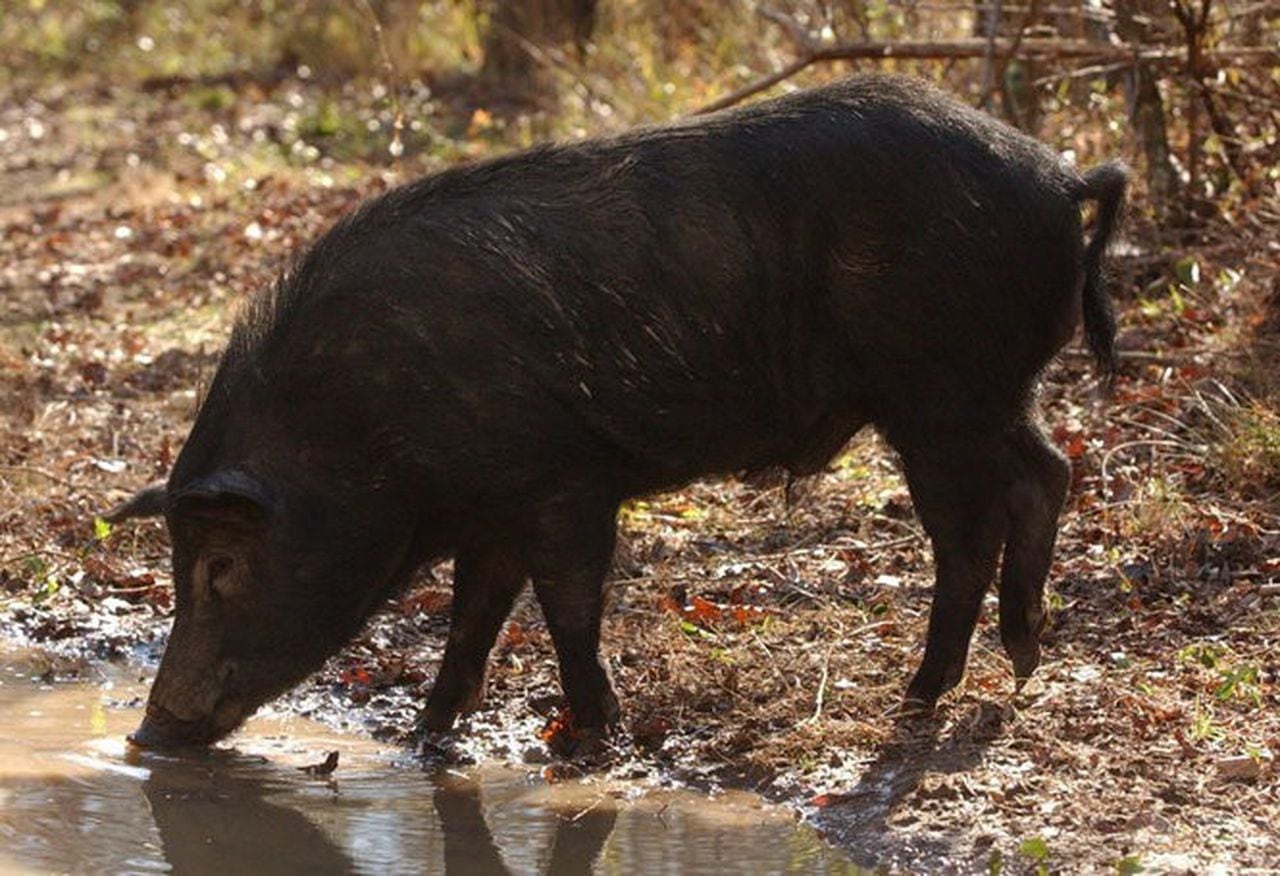Alabama scientists ask for help collecting feral pig poop
A University of Alabama biology professor is working to trace the origins of the pollution in Alabama’s river waters. But first she needs a few baggies of wild hog poop.
Julie Olson, a professor and curriculum chair at the UA Department of Biological Sciences, is one year into a three-year study of water pollution in Alabama’s rivers and where that pollution came from.
“We’re trying to get a handle on how much poop, for lack of a better word, is in our rivers,” Olson said. “And then secondarily, if we can trace back to who’s providing that source of poop. Hopefully, it can make some of our mitigation efforts a little bit more successful.”
To do this, the team is collecting water samples from various locations throughout central Alabama, analyzing the bacterial content in those samples, and determining how much poop is in each sample, and whether that poop came from a human or other species.
Environmental non-profits Black Warrior Riverkeeper, Cahaba Riverkeeper and Coosa Riverkeeper are helping out by collecting water samples from select locations along those rivers. The study is being funded by the U.S. Environmental Protection Agency.
“We have 10 sites that we sample every month, looking for just how much fecal contamination we have in the rivers,” Olson said. “And then [the Riverkeepers] also collect five additional samples each month, where we take sites that had elevated levels of fecal contamination over previous months. And we start working upstream trying to identify where the poop is coming into the rivers.”
Olson said the source might be from a wastewater treatment plant that’s malfunctioning, a farm where animals are defecating into the water, or where wild animals like hogs are contaminating the streams.
Feral hogs are a non-native species to Alabama, though they’ve been here hundreds of years. Spanish explorers initially brought the hogs from Europe to be used as a food source and they’ve been here ever since.
But they can be very destructive to the native ecosystems and to yards and farms across their range. Hogs multiply quickly, are hard to kill, and create water pollution by trampling stream beds and fouling smaller creeks and streams.
Wild hogs are estimated to cause more than $50 million in damages in Alabama each year.
How does it work?
Once the samples are in, Olson’s team does the lab work to see how much poop is in the rivers, and hopefully determine what kinds of animal left the droppings in the river.
But to do that, she needs some feral hog feces to test against. The lab testing involves using DNA primers that bond to broken fragments of animal DNA, Olson said. The team needs some verified hog fecal samples to verify the accuracy of the primers that are being used.
“In this case, we are looking for pig poo in particular,” Olson said. “We’re trying to get wild pig poo just because we have so many feral hogs that we thought it’d be interesting.”
Olson said the team has already gotten samples from common farm animals like cows and may consider creating DNA primers to help identify deer feces or other wild animals.
“We’ve been able to get samples from a wide variety of different animal sources,” Olson said. “Allowing us to just verify that our primer sets will be specific so that we can tell you definitively kind of where the poop is coming from or where it’s not coming from.”
How to find and collect hog droppings
Never picked up pig poop before?
Collecting it is pretty easy, Olson said. Identifying the source of the poo might be a little trickier.
According to the Texas AgriLife Extension, feral hogs are omnivores, eating a wide range of foods, depending on the season and diet.
“For these reasons, feral hog droppings take many forms, which can make identification difficult,” the Texas Extension said in a document on recognizing feral hog signs.
“Droppings are often tubular, filled with mast and other vegetation, and with shape and consistency ranging from droppings resembling those of a domestic dog to those of a horse. A diet of young grasses and shoots results in loose tubes and formless patties.”
But once you’re you’ve found some hog scat, Olson said an inside-out plastic baggie will do the trick.
“A Ziploc bag turned inside out, just like you would if you had a dog that you were taking for a walk,” she said. “Just put your hand in a bag, pull it in, so that now it’s on the inside of the bag and just seal your Ziploc back up.
Olson also said that the testing does not require a lot of material.
“We do not need a lot,” she said. “Everybody’s wanting to fill the bags, but we only need a couple of grams.
“I think of it as a chocolate chip or two is plenty for our purposes.”
Olson said that once you have collected a sample to reach out to her directly to arrange a transfer.
“I know it sounds crazy, but it’s one of those that sometimes we can get people who would really like to contribute to citizen science and that’s definitely something that we would appreciate,” Olson said.
